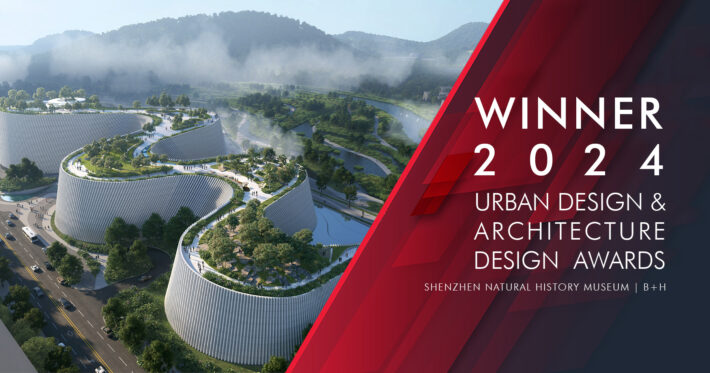Set to be one of Shenzhen’s “Ten Cultural Facilities in the New Era” and the first large-scale comprehensive natural museum in Southern China once completed, Shenzhen Natural History Museum has attracted extensive public attention since the request of design proposals.
Urban Design & Architecture Design Awards 2025: Entries Open!
Take your work to the next level. Register Now…
Gold 🏆 Winner
Urban Design & Architecture Design Awards 2024
Shenzhen Natural History Museum
Cultural Architecture (Under Construction)
Firm
B+H
Architect/Designer
Barry Day
Design Team
Henry Zhang, Richard Tang, Alan Ma, Xinghao Chen, Chen Chen, Lijuan Cao, Barry Day, Yingyin Cen, Wing Cen and Zikai Zhuang
Location
Shenzhen, China
Country
China
Photographer/Copyright
©B+H
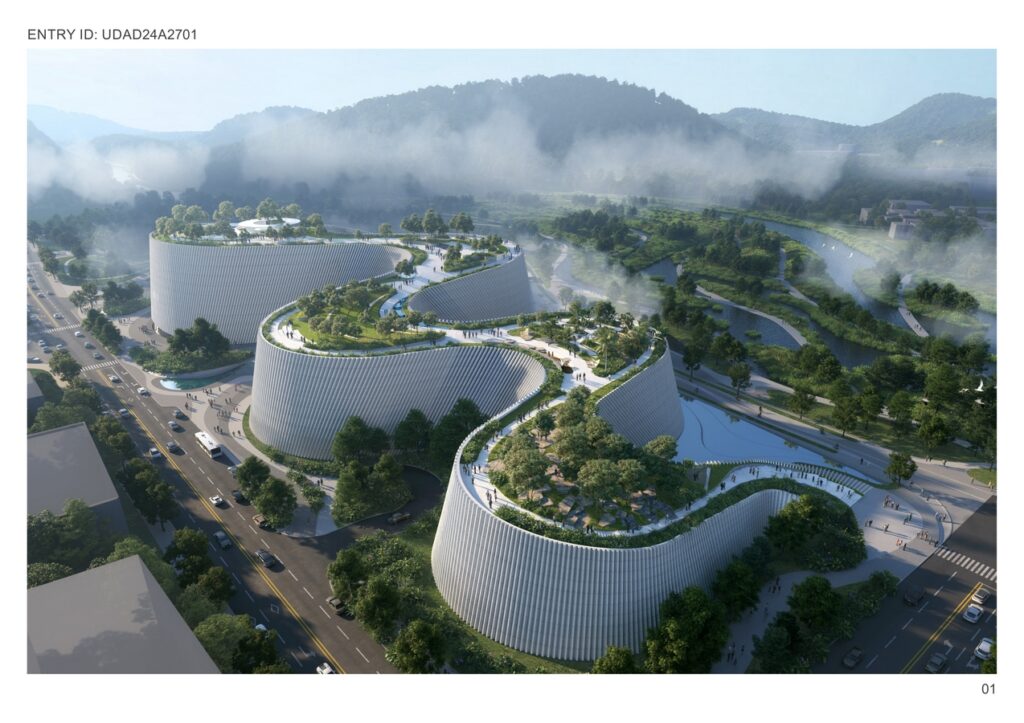
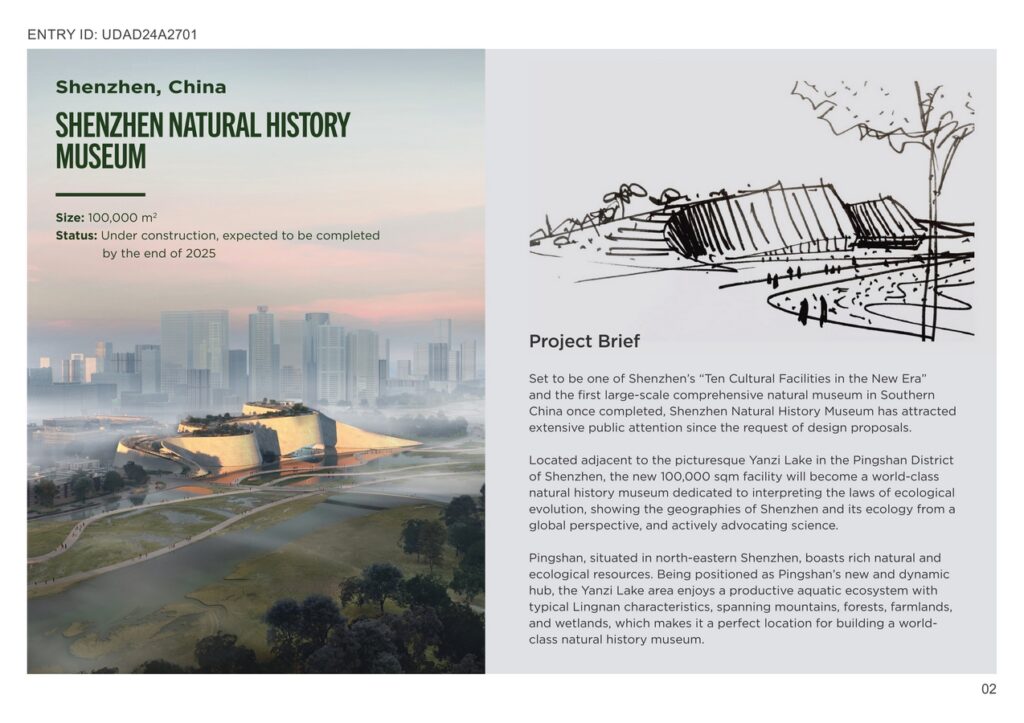
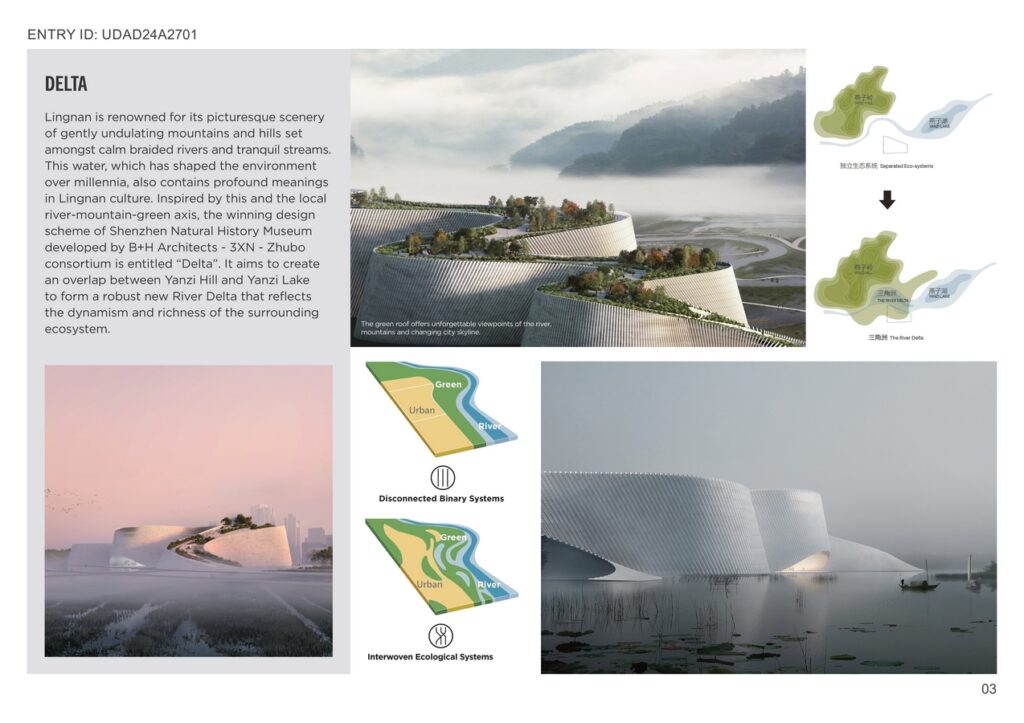
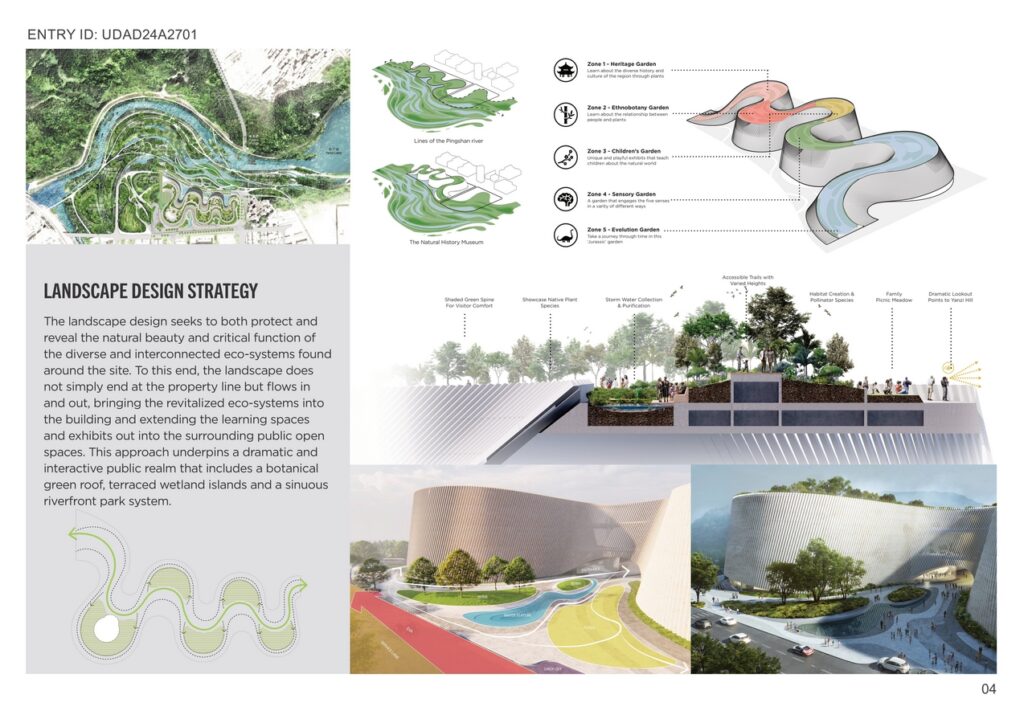
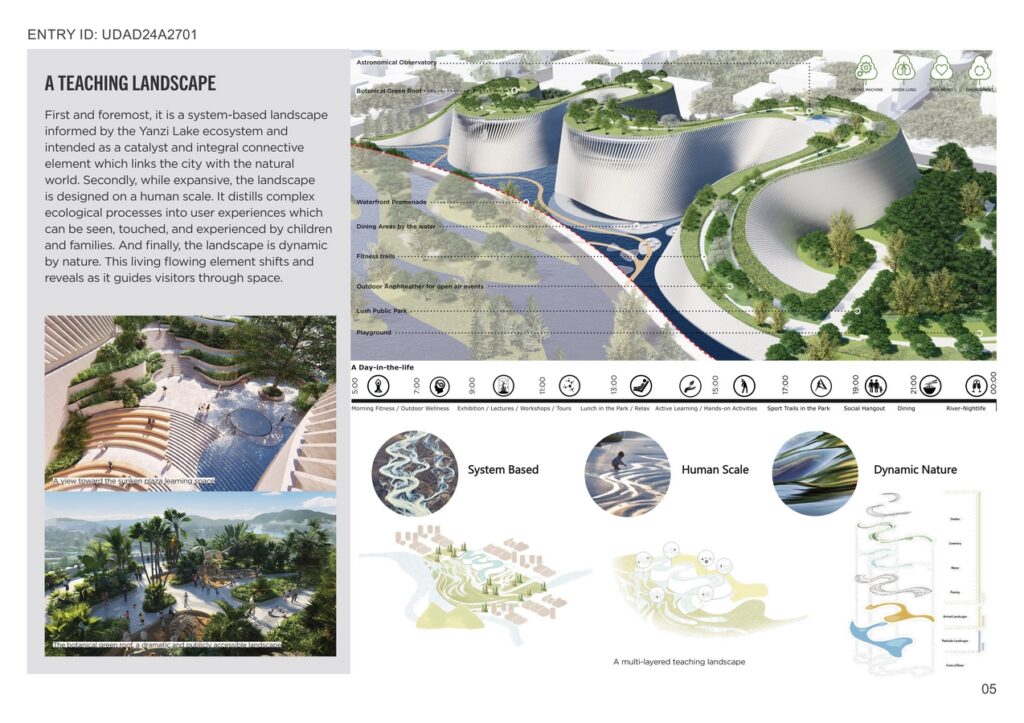
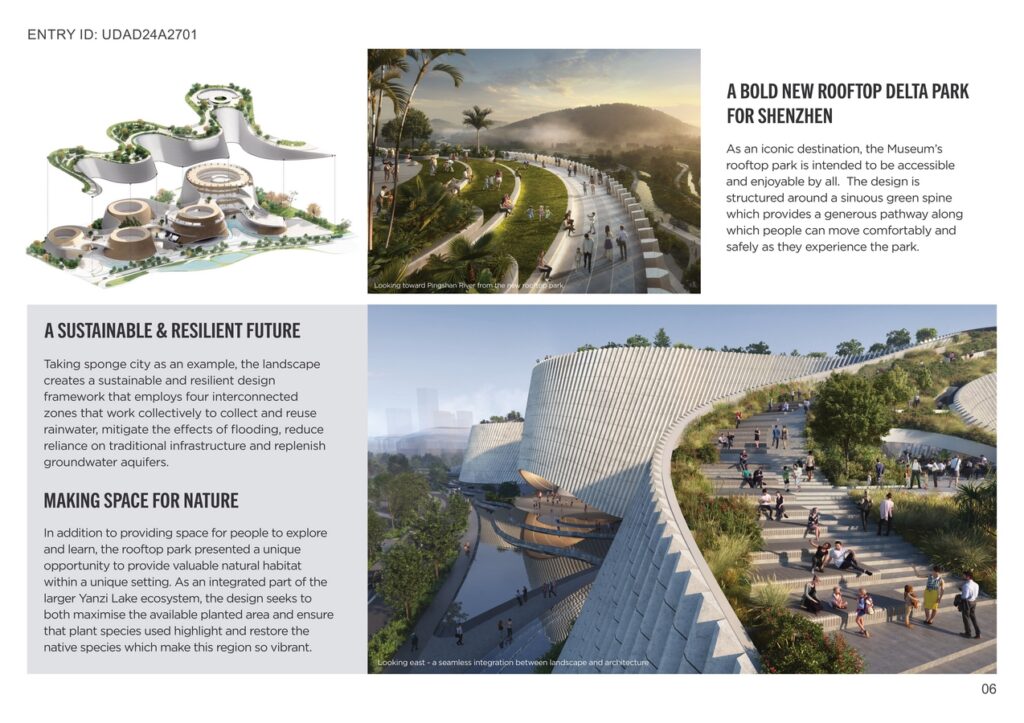
Located adjacent to the picturesque Yanzi Lake in the Pingshan District of Shenzhen, the new 100,000 sqm facility will become a world-class natural history museum dedicated to interpreting the laws of ecological evolution, showing the geographies of Shenzhen and its ecology from a global perspective, and actively advocating science.
Pingshan, situated in north-eastern Shenzhen, boasts rich natural and ecological resources. Being positioned as Pingshan’s new and dynamic hub, the Yanzi Lake area enjoys a productive aquatic ecosystem with typical Lingnan characteristics, spanning mountains, forests, farmlands, and wetlands, which makes it a perfect location for building a world-class natural history museum.
DELTA
Lingnan is renowned for its picturesque scenery of gently undulating mountains and hills set amongst calm braided rivers and tranquil streams. This water, which has shaped the environment over millennia, also contains profound meanings in Lingnan culture. Inspired by this and the local river-mountain-green axis, the winning design scheme of Shenzhen Natural History Museum developed by B+H Architects – 3XN – Zhubo consortium is entitled “Delta”. It aims to create an overlap between Yanzi Hill and Yanzi Lake to form a robust new River Delta that reflects the dynamism and richness of the surrounding ecosystem.
LANDSCAPE DESIGN STRATEGY
The landscape design seeks to both protect and reveal the natural beauty and critical function of the diverse and interconnected eco-systems found around the site. To this end, the landscape does not simply end at the property line but flows in and out, bringing the revitalized eco-systems into the building and extending the learning spaces and exhibits out into the surrounding public open spaces. This approach underpins a dramatic and interactive public realm that includes a botanical green roof, terraced wetland islands and a sinuous riverfront park system.
A TEACHING LANDSCAPE
First and foremost, it is a system-based landscape informed by the Yanzi Lake ecosystem and intended as a catalyst and integral connective element which links the city with the natural world. Secondly, while expansive, the landscape is designed on a human scale. It distills complex ecological processes into user experiences which can be seen, touched, and experienced by children and families. And finally, the landscape is dynamic by nature. This living flowing element shifts and reveals as it guides visitors through space.
A BOLD NEW rooftop DELTA PARK FOR SHENZHEN
As an iconic destination, the Museum’s rooftop park is intended to be accessible and enjoyable by all. The design is structured around a sinuous green spine which provides a generous pathway along which people can move comfortably and safely as they experience the park.
MAKING SPACE FOR NATURE
In addition to providing space for people to explore and learn, the rooftop park presented a unique opportunity to provide valuable natural habitat within a unique setting. As an integrated part of the larger Yanzi Lake ecosystem, the design seeks to both maximise the available planted area and ensure that plant species use highlight and restore the native species which make this region so vibrant.
a Sustainable & resilient Future
Taking sponge city as an example, the landscape creates a sustainable and resilient design framework that employs four interconnected zones that work collectively to collect and reuse rainwater, mitigate the effects of flooding, reduce reliance on traditional infrastructure and replenish groundwater aquifers.


